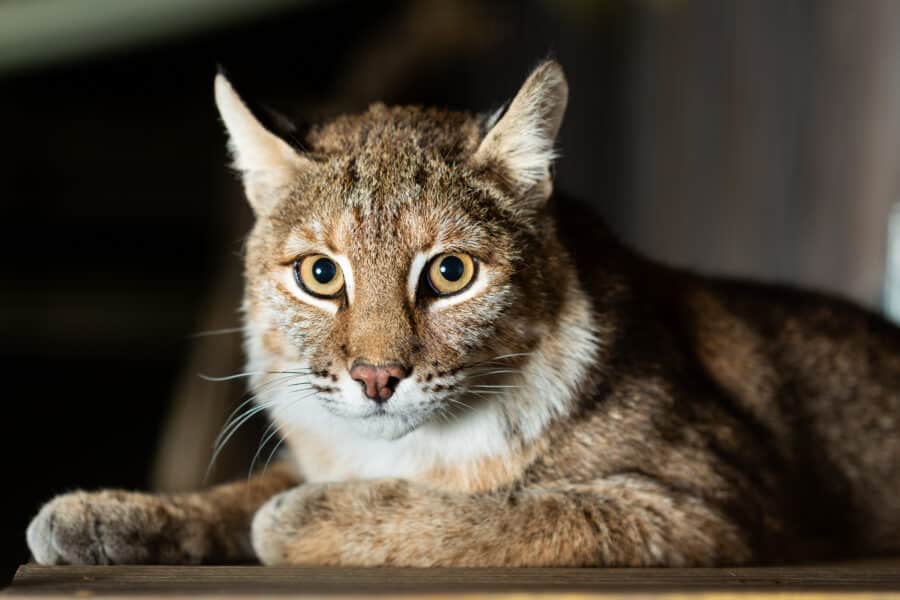For some, the payoff of a juicy burger isn’t worth the ecological damage, especially when data shows the livestock sector is responsible for 18% of global greenhouse gases, more than the direct emissions from all forms of global transport. For those who aren’t willing to give up meat, but want to make a positive impact on the world (and potentially improve their own health), this produces a dilemma.
However, a potential solution for some is on the horizon—insect farming. While insects are commonly eaten around the world, Americans have stayed stuck to the “ick” factor, and largely turned their noses up at crickets and mealworms and fly larvae (maggots). But in today’s warming planet, more consumers are willing to make the change.
Of course, with any change comes pushback. Insect farming has faced marketing challenges that supersede the concept of eating something Americans typically designate “gross”—including opposition from QAnon and other alt-right groups. Why? Members of the movement claim that the “shadow government” (a concept with antisemitic origins) will force people to consume insects under the guise of aiding the climate. While this claim originated as a meme, some seem genuinely worried that the American government may someday officially add insects to “MyPlate,” the Obama era replacement of the FDA’s Food Pyramid. “Eating insects is repulsive and un-American,” said Tucker Carlson in 2019, “And of course, therefore, in the eyes of the left, it must be awesome.”
Unfortunately, this piece was written without any endorsement from the government. (If my FBI handler is reading this, I’m still waiting on the check.)
QAnon may be confused on the details, but insect farming is indeed touted as a revolutionary way to decrease consumers’ impact on the climate (despite insects being used as food for many centuries before being popularized by Americans). Why, exactly, is insect farming so beneficial to the environment? For one, the resources needed to produce insect products is drastically lower in comparison to meat.
According to Joe Ford, a former laborer at an insect farming facility, insect farms use significantly less water than traditional livestock, and take up much less space. “Raising cattle requires several hundred square meters per kilogram of meat, [whereas] a kilo of cricket meat could be grown in your bedroom,” says Ford.
Another way eating insects offers major environmental benefits is because of their high feed-to-meat conversion rate in comparison to traditional livestock. Insects convert plant proteins to insect proteins far more efficiently than other animals. Crickets require less than 2 kg of feed for every 1 kg of body weight gain, whereas the average amount of feed required to produce an equivalent body weight increase for chicken is 2.5 kg, 5 kg for pork and up to 10 kg for beef. Atticus Wolf, a USDA Biological Science Technician, tells me:
“It’s a lot easier to raise around half-a -million insects in a 4000 square foot facility than it is to raise cows or other livestock. In addition, insects do not produce methane gas which is a greenhouse gas. There are also less material components required per gram of usable protein than traditional meat.”
Insect farming is not perfect. For instance, some insect farms feed their livestock soy products that could be used for human consumption. Concerns continue to grow as corporate meat giants enter the insect farming game; Tyson Foods, perhaps best known for their industrial chicken farms, has invested in Protix, a purveyor of insect protein, and plans to partner with them to build a U.S. production facility. It’s unclear if increased regulations will fall into place as larger corporations enter the scene.
Additionally, there are fewer animal welfare concerns regarding large-scale insect farming. “Chickens are crammed into boxes so small they can’t turn around, tortured just to increase the dollar per space yield,” says Ford. “Put 50 crickets in that same small dark box and they’ll be in heaven.”
However, insect farmers also have fewer ways to determine the overall well-being of their animals. “It’s easy to see when a cow or sheep is stressed, even a chicken if you’re used to them,” says Ford. “A stressed cricket is a lot harder to spot. A stressed mealworm is probably impossible. My hope is that smaller brains need less enrichment and a mealworm won’t get depression if it can’t touch grass, but I’d like to see more research to be sure.”
Many insects can be consumed by humans, but the most popular species to be farmed are grasshoppers, crickets, mealworms and what is known as “BSFL” (black soldier fly larvae—i.e. maggots). There’s a variety of reasons behind these choices, mainly leading back to easy care and edibility—the harder the exoskeleton, the more chewing is required.
Overcoming the ‘Ick factor’
As someone who has tried chocolate covered mealworms, crickets and some other insect treats, I’ll admit that a bit of the “ick factor” remains. Even though I find the taste of insects adequate, the feeling of their little legs tickling your throat and the distinctive crunch of exoskeletons isn’t my jam. But I was never taught how to prepare insects growing up, and eating them doesn’t come as naturally as it does to meat.
With growing knowledge of insect preparation and many tasty recipes available for free online, I expect this will change. According to Ford:
“Mouthfeel is the biggest problem for most people because it’s so distinct, so if you’re just starting out, try to find ways to reduce the crunch. The best option is to simply grind the insects into a protein flour for things like oat bars or smoothies. For crickets, there’s nothing better than simply coating them in chocolate and if it’s your first time eating insects, that’s absolutely the best experience. For mealworms, try a sweet chili and garlic stir fry with some fresh vegetables.”
Some argue that the best way to cook with insects is to treat them like tofu or any other protein lacking much independent flavor. “Insects mostly taste like what you feed them on,” says Wolf. “They don’t really have a pronounced flavor of their own besides a pine flavor. It’s best to season insects so that they take on another flavor, as they don’t have that much on their own.”
If you’re interested in beginning insect farming, whether as a hobbyist or on a larger scale, it’s important to know what you’re taking on. If bugs make you squeamish generally, this probably isn’t the job for you. Most insect farmers don’t consider their insects as “pets,” but respect them and care for them like any other livestock.
“Get some experiences working with live insects first,” recommends Wolf, who entered the world of insect farming after assisting his entomology professor in caring for his cockroach colonies, which weren’t used for human consumption. Now, Wolf raises insect colonies for biocontrol. “There are a lot of things about raising insects that are difficult, and it’s better to have some familiarity with them.”
Keep in mind that, like any agricultural job, insect farming isn’t easy work. “If you don’t mind starting at the bottom, [you should] do some day laboring so an employer knows you can do the physical work needed and have experience in an industrial environment,” says Ford. “Insects tend to need things hot and humid, so be ready for discomfort.”
For those new to the industry, consider starting on a small scale. While I’ve never raised insects for food, I managed to successfully manage a healthy mealworm colony to provide feeder insects for Frodo, my bearded dragon; while it’s time-consuming and sometimes stressful, the rewards can be great. And, for those who are squeamish about the farming process itself, not the insects, doing it yourself can be a relief. If you raise your own insects for consumption, you fully control the process and can trust your end result.
Insect farming may not be a quick fix for climate change. Realistically, it also won’t be replacing the traditional meat industry, at least not anytime soon. But, for your health and for the planet, consider making insects a larger part of your diet—you might end up getting hooked on mealworm stir-fry or a black soldier fly larvae smoothie.
Patrick Kuklinski is a longtime writer whose work has been featured in publications including Reptiles, DogTime and Dogs Naturally, among others. After many years in North Carolina, he now resides in a small apartment in Concord, N.H., with too many animals. You can find more of his work and general chatter at todaysbird.tumblr.com.
Have thoughts or reactions to this or any other piece that you’d like to share? Send us a note with the Letter to the Editor form.
Want to republish this story? Check out our guide.









